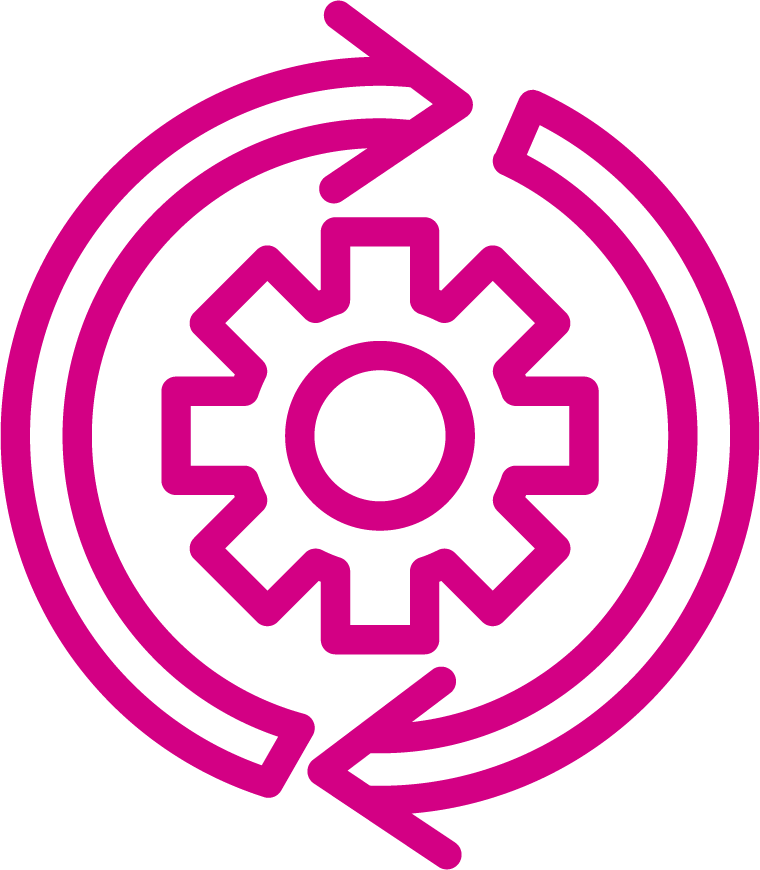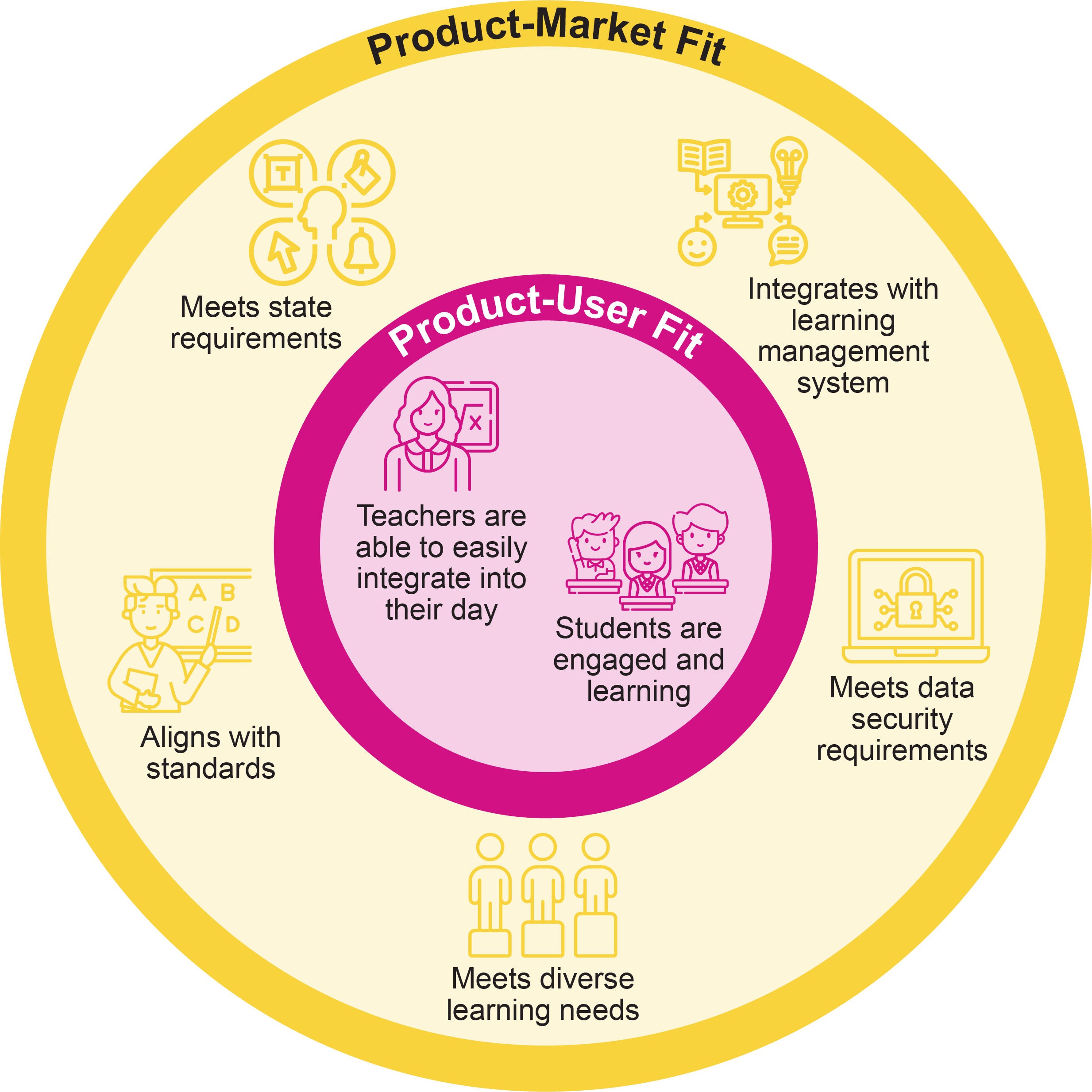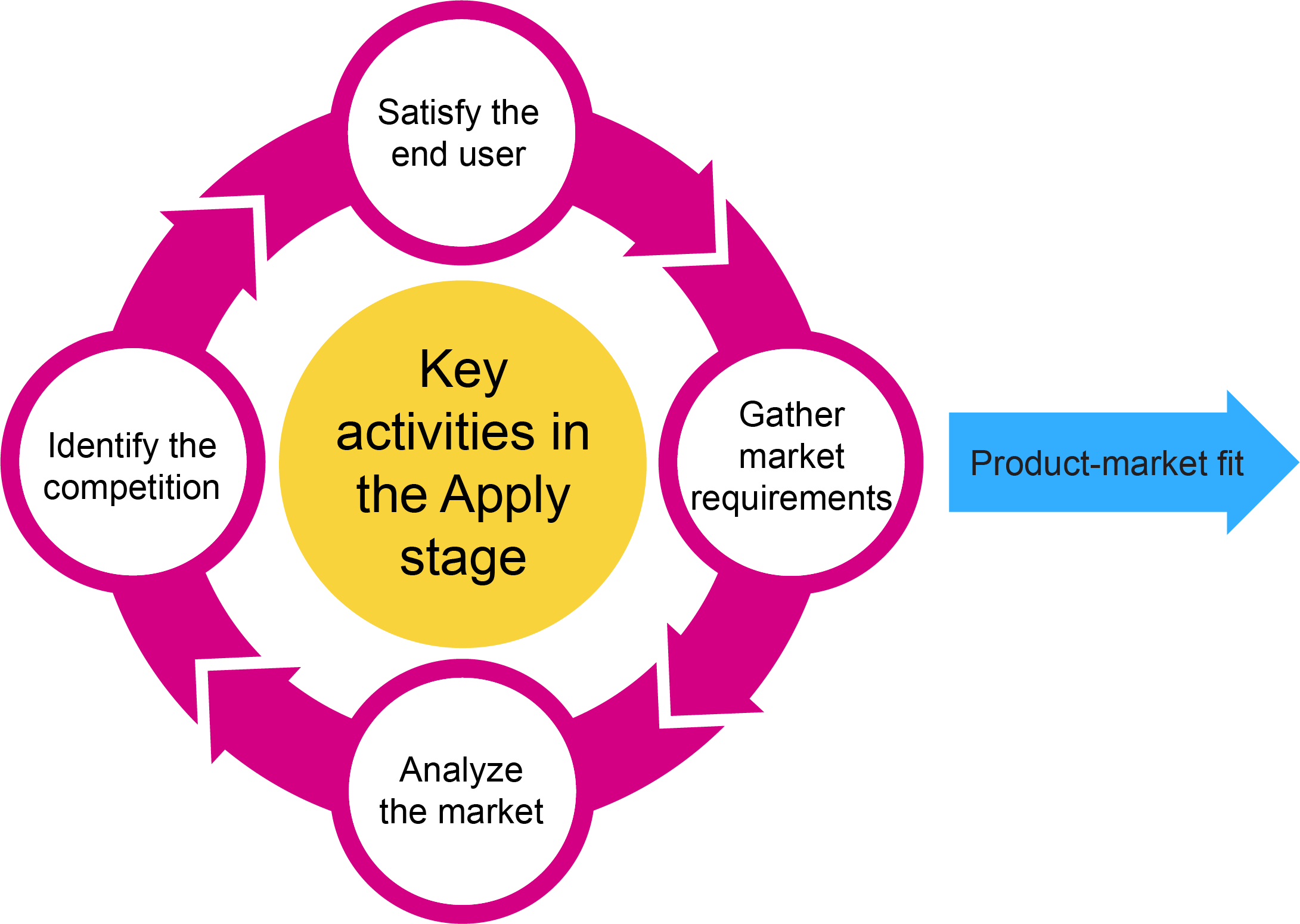| Overview | Satisfy the End User | Gather Market Requirements | Analyze the Market | Identify the Competition | Assess Product-Market Fit |
|---|
Overview
 The second stage of the Invent-Apply-Transition framework involves understanding and satisfying the requirements of the “market” for your educational product, intervention, program, or resource (product-market fit), while continuing to strengthen the degree to which end-user needs are met (product-user fit). We use the term “market” because to gain adoption even freely available, openly licensed educational resources created by researchers must participate in a “marketplace” characterized by voluntary choices, information flows, competing solutions, and regulations. And even free materials may require users to expend resources in the process of accessing and using. As educators operate in environments of scarce resources (especially time and attention!), providers of all kinds of educational solutions must make the case that theirs is the best fit for an educational objective.
The second stage of the Invent-Apply-Transition framework involves understanding and satisfying the requirements of the “market” for your educational product, intervention, program, or resource (product-market fit), while continuing to strengthen the degree to which end-user needs are met (product-user fit). We use the term “market” because to gain adoption even freely available, openly licensed educational resources created by researchers must participate in a “marketplace” characterized by voluntary choices, information flows, competing solutions, and regulations. And even free materials may require users to expend resources in the process of accessing and using. As educators operate in environments of scarce resources (especially time and attention!), providers of all kinds of educational solutions must make the case that theirs is the best fit for an educational objective.
What’s the difference between product-user fit and product-market fit?
Product-user fit focuses on satisfying the needs of the end users of the product. For educational products, these users could be teachers and students. The product must not only be aligned with their goals, such as improving learning outcomes or increasing engagement, but also be accessible and usable. Product-user fit includes considering various end-user needs, such as the requirements of students with disabilities or the constraints of time or resources, which may necessitate specialized features or design considerations.
Product-market fit focuses on satisfying the requirements of the target market, including the customers who will select and/or purchase the product. For educational products, these customers are typically district staff or school leaders. These decision-makers have requirements beyond product-user fit, such as interoperability and integration with existing programs and infrastructure, or needs to meet state or federal policy requirements.
The Apply stage typically coincides with rigorous testing of your educational product to measure effectiveness and ensure the product meets the indicators of success that matter most to your users and decision-makers.

During the Apply stage, it is essential to partner with users and other key stakeholders to generate improvement ideas, identify contextual considerations, share specific feedback on the product, and champion the product to others. Champions are users who are enthusiastic and supportive of your product and have influence within their fields (for example an English teacher or literacy coach with a large professional network). These champions can connect you with a broader pool of users or decision-makers. Engaging this expanded pool will provide insight into the market requirements, which include their needs, wants, and expectations. At the same time, analyzing the potential number of districts, schools and students you aim to reach (market size) and the specific characteristics of population or groups that your solution is best suited for (market segment), as well as the existing products or providers in that market, will enhance your understanding of the requirements. This information can help you to adapt and differentiate your product and situate it in the market as you prepare for transition.
The key activities in the Apply stage are iterative and may be nonlinear. Insights from the Apply stage may lead you to return to activities in the Invent stage. For example, after engaging with different user groups and testing, you might find that a product is only effective for some students due to biases built into the design. This would lead you back to reconsidering the core components of the product and ensuring your indicators of success include different student groups. Once you achieve product-user fit for your first adopters and have a clear plan to get to product-market fit, you will explore the transition pathways available to you.

